|
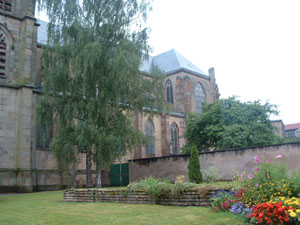
This chapel in Sarrebourg. Sarrebourg is a town in Lorraine, France.
|
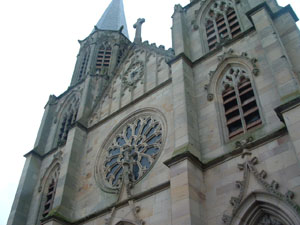
The chapel’s twin towers rear up into the sky.
|
|
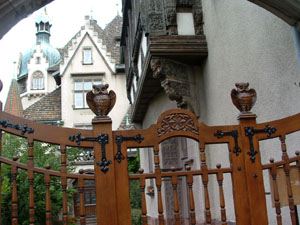
Strasburg, on the border of France and Germany, is the capital of the Alsace region in northeastern France. It boasts a variety of architectural styles and many of its buildings are several hundred years old. Notice the owls perched on the gates of this schoolhouse.
|
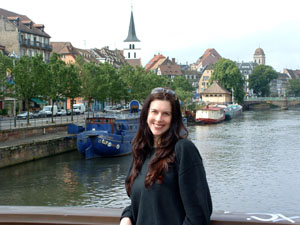
In the canals castors, or otters, will often swim by. Strasbourg the city was originally founded by the Romans in the 4th century for its location near water. They called used it as a military outpost and called it Argentoratum. |
|
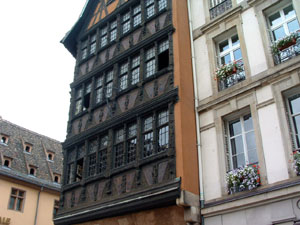
Strasburg has seen a great deal of history. It was the site of several Roman battles in 357 and again in 366. In the plaza across from the Strasbourg Cathedral are buildings that are more than seven hundred years old. The pharmacy of the Stag was built 1268 and is still standing, as is this dark wooden house, called The Kammerzell house, built in 1589.
|
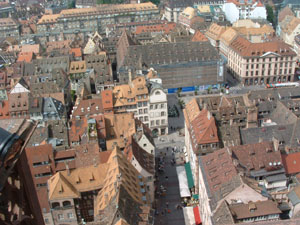
This view from the bell tower of Strasburg’s cathedral overlooks houses, apartments and churches, some of which date back to the 15th century. The Straßburger Münster was completed in 1439, and became the World’s Tallest Building at that time, surpassing even the Great Pyramid of Giza. |
|
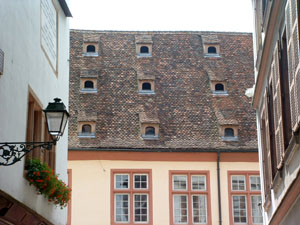
The streets of Strasbourg continuously surprise. Each house has its own unique history, many times dating back several hundred years.
|
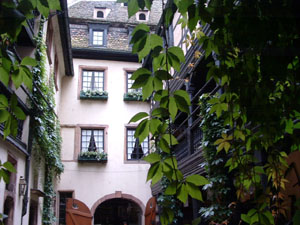 |
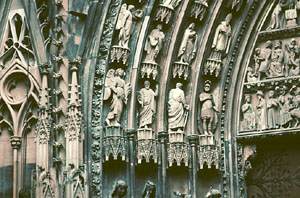
The Strasbourg Cathedral was built in 1015 by Bishop Werner von Habsburg. When fire destroyed most of the original Romanesque building, the cathedral was rebuilt in the late 1100s. It’s gothic architectural style was an aesthetic that had only recently reached Alsace. |
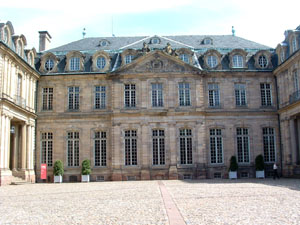
This house goes back to the Renaissance. Today, it has been turned into a museum. |
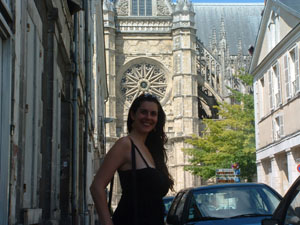
Orleans cathedral, where Joan of Arc prayed. There are few people who aren’t familiar with Joan of Arc’s controversial story. She is a national heroine in France and a saint in the Roman Catholic Church. Joan asserted that she had visions from God which told her to recover her homeland from English domination in the 13th century.
The uncrowned King Charles VII allowed her to accompany his soldiers to the siege at Orléans where she proved herself to be not only valiant but an astute tactician.When she was captured however, the newly crowned Charles VII refused to ransom her and the English burned the nineteen year old Joan at the stake. |
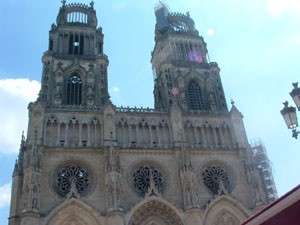
Building of the cathedral began in 1278. In the 1500s, however, war damaged the building badly and the the cathedral was partially reconstructed in the 1600s. The west front, flanked by two towers, has five doorways and Baroque architecture. |
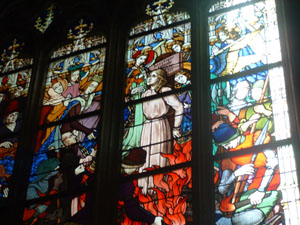
Glass windows depicting Joan’s last moments illuminate the cathedral. There are ten stained glass depictions of her in total. |
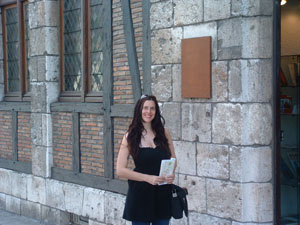
In Orleans there still remains the house where Joan stayed while visiting the city. |
|
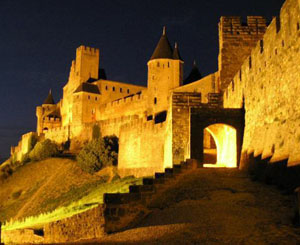
The medieval city of Carcassonne dates back even further to 3500 BCE. In the 6th century Carcassonne began a center for trade, and around 100 BC the Romans fortified the hilltop. In 1067 Carcassonne became the property of Raimond Bernard Trencavel, viscount of Albi and Nimes, and the fortress was refortified and a cathedral was added.
|
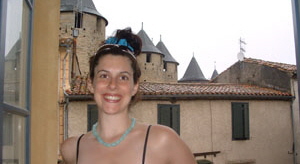
Sheltered inside of a several hundred year old building within Carcassonne is a Best Western. We spent the night inside the 2000 year old city. |
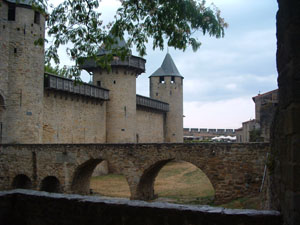
These are the remains of Lady Jane Grey’s childhood home. Lady Jane Grey was young, beautiful and supremely intelligent. When King Edward died, her father-in-law, John Dudley, tried to persuade her to make an attempt for the English throne so that his son would be King. She was an unwilling queen, and when she was crowned she refused to make her fifteen year old husband King. Instead, she insisted on making him a Duke. Her reign lasted for nine short days before Mary arrived in England from Scotland, proclaimed herself queen, and ordered Lady Jane Grey beheaded. In the days before she was executed, seventeen year old Lady Jane truly believed she would be let go to return to her childhood home and live out her days as a noblewoman. |
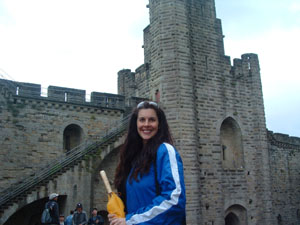
Stairs lead up to the ramparts where, in the middle of the night, guests who are staying inside the fortress city can walk and oversee the Languedoc region. Because so few guests spend the night, walking around the city in the middle of the night as the mists cling to the ancient city walls is solitary, eerie and spectacular experience. |
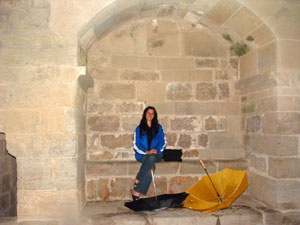
Sitting where the guards once sat a thousand years ago. |
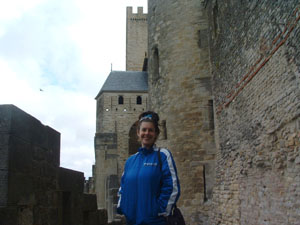
Outside the medieval city, near the gates |
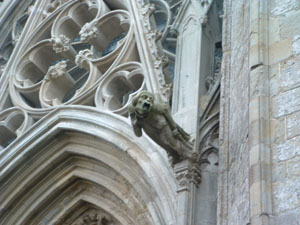
Carcassonne’s ancient chapel features gargoyles. The chapel was built in 1096 AD. |
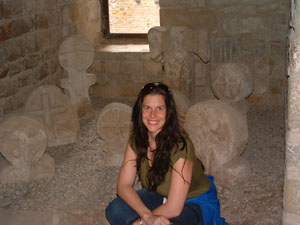
The Roman gravestones in Carcassonne mark the site of people who lived and died over two thousand years ago in this ancient city. |
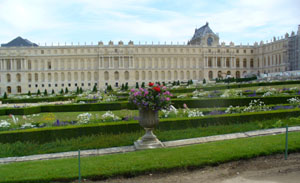
The gardens of Versailles. |
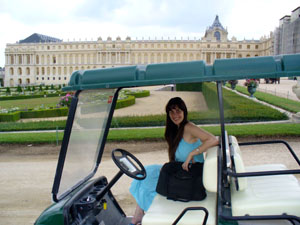
Versailles now offers tourists golf carts in which to tour the gardens. |
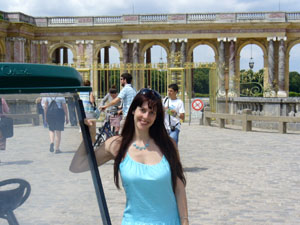
The Trianon was Marie Antoinette’s private residence in Versailles. |
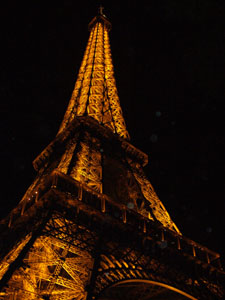
Bastille day in France celebrates that Storming of the Bastille during the French Revolution. The Bastille was a prison that had come to symbolize oppression. when the French stormed the building, however, all they found were a few decrepit old men, one of whom didn’t want to leave. |
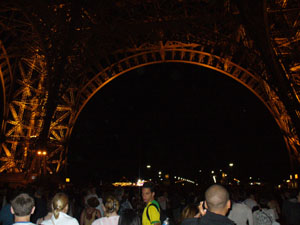
For as far as the eye could see there were people crowded beneath the Eiffel Tower. |
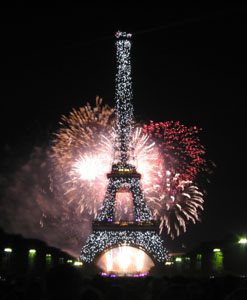
Fireworks explode over the Eiffel tower on Bastille Day (July 14th) and tens of thousands of people crowd into the streets for a night of drinking and partying. |
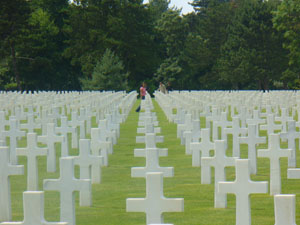
The Normandy Cemetery and War Memorial honors the US soldiers who died in WWII at Normandy. On nearly two hundred pristine acres this American cemetery has 9387 burials of US service men and women. Of this number, 307 are unknowns. |
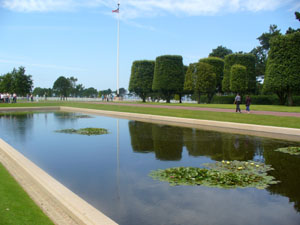
The grounds are peaceful and haunting in their beauty. |
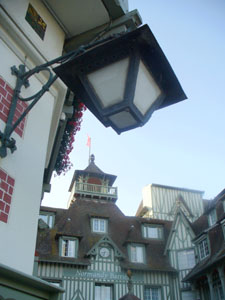
Arriving at the Normandy Barrière Hotel. Normandy was the home of the Normans in the early Middle Ages, the last people to successfully invade England. |
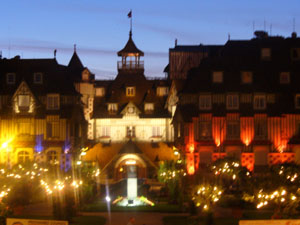
The Normandy Barrière Hotel at night looks like a Christmas fairyland. Truly one of France’s finest and most striking hotels. It is surrounded by other hotels built in the early 1900s at the height of la belle époque in France. |

